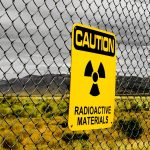Radioactive Materials
Radiation is naturally present in our environment, but it can also be produced artificially, as a byproduct of the process of creating energy by splitting atoms. This is how nuclear reactors create radioactive materials (known as “byproduct materials”) that can be used to benefit humankind in a surprising number of ways, as described on this page:
- Industrial Uses
- Medical and Veterinary Uses
- Academic and Scientific Applications
Industrial Uses
We could talk all day about the many surprising industrial uses of radiation and not complete the list, but a few examples illustrate the point:
Irradiators sterilize medical equipment and donated blood by exposing them to radiation to kill germs and help prevent the spread of disease. Some foods, spices, and drink containers are also sterilized this way so that they stay fresh longer. In an irradiator, the radioactive material, or “source,” emits a beam of radiation that is powerful enough to kill any harmful germs. The beam does not make the items themselves radioactive, however, so they are safe to use — in fact, safer than they were before being treated.
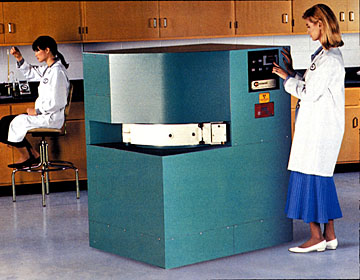
Gauges use radioactive material to measure moisture in soil during construction of roads and buildings. They also measure and control the thickness of products such as paper napkins, newspapers, plastics and sheet metals.The radioactive material in gauges can also measure the amount of air whipped into our ice cream. In addition, they can control how fast a liquid flows into a container, and make sure that every bottle is filled to the same level. That’s how you know that when you buy a liter of your favorite drink, you really are getting a liter.

Radiography cameras use radioactive materials to produce an image on photographic film to show the condition of the insides of pipes or walls. This allows engineers to detect defects without actually damaging or destroying the object being scanned. The image resembles an x-ray you might have taken at your doctor’s office.
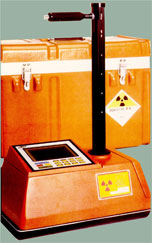
Well logging devices use radioactive materials and detectors to help in exploring for oil, natural gas, or minerals. These devices are inserted into deep wells and help create a map of the resources underground.
Smoke detectors use radioactive material to ionize the air around them and trigger an alarm if smoke is present. Even the small smoke detectors in your home may contain a tiny amount of radioactive material that helps protect you and your family.
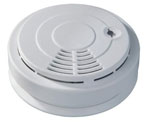
Medical and Veterinary Uses
Hospitals, doctors, dentists, and even veterinarians use radioactive materials to help diagnose, treat, and study illnesses such as cancer. In fact, thousands of patients are treated each year with radioactive materials in the United States.
Diagnostic Uses
If you’ve ever had a CT scan or PET scan, you were probably asked to drink a liquid and sit or lie under — or inside — a big machine. The liquid contained a small amount of radioactive material and, while it traveled through your body, the machine was able to take pictures of your internal organs so your doctor could see if they were working properly. These color pictures show the shapes and details of your internal organs. This helps your doctor locate and identify tumors or other problems with internal organs.
Hospitals and radiology centers also perform approximately 10 million “nuclear medicine” procedures in the United States each year. In such procedures, doctors diagnose patients’ medical problems using slightly radioactive substances, which are attracted to certain internal organs, such as the pancreas, kidney, thyroid, liver, or brain. Sometimes, instead of asking you to sit under a machine after drinking the radioactive liquid, your doctor may test your urine to see how well your body was able to flush out the radiation.

Therapeutic Uses
Radioactive materials can also be used to actively fight a disease, kill cancerous tissue, reduce the size of a tumor, or reduce pain.
Tiny radioactive seeds can be implanted in a patient’s body to kill a cancerous tumor. Radioactive material can be swallowed, or powerful beams of radiation can be used to shrink tumors.
Therapeutic doses may also be used to treat other conditions, such as clogged blood vessels. In addition, radioactive material can act like a pain pill, to make a patient more comfortable.
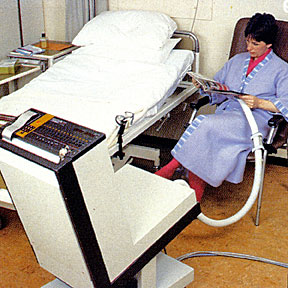
Medical Research
When nuclear materials are used in humans as part of a medical research study, this usually involves testing a new drug or medical device to see how safe and effective it will be. This type of research can also be used to determine how different patients respond to treatment with radioactive materials.
Veterinary Uses
As with people, radioactive materials can be used to diagnose, treat, and study illnesses in domestic pets and non-food animals. At the present time, no radioactive veterinary drugs have been approved for use in animals intended for the human food supply.
Academic and Scientific Applications
Some universities and colleges, high schools, and other academic and scientific institutions use radioactive materials in laboratory experiments and research, as well as classroom demonstrations. In fact, if you’ve ever conducted a gas chromatography experiment in chemistry lab, you’ve used a device that contains radioactive material!
Archaeologists also use radioactive materials to determine the ages of fossils and other objects through a process called “carbon dating.” In addition, radioactive materials power our dreams of outer space, as they fuel our spacecraft and supply electricity to satellites that are sent on missions to the outermost regions of our solar system.
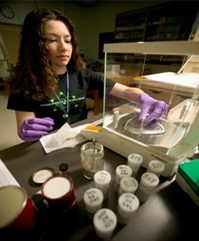
Source: http://www.nrc.gov/reading-rm/basic-ref/students.html

